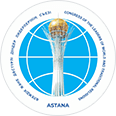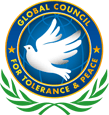Here was the notorious camp “ALZHIR” – “Akmola camp for wives of traitors to Motherland” which during many years was the house for more than 18 000 women. Women whose guilty consisted only in the fact that they were simply wives of the arrested and shoot parricides.
Many women that served their sentence in “ALZHIR” are popular with the whole post-soviet space such as Aziza Ryskulova and her mother Arifa Esengulova, Damesh Zhurgeneva, Rabiga Asfendiyarova, singer Lidiya Ruslanova, actress Lidiya Frenkel, writer Galina Serebryakova, women from the family of the shot marshal M. Tukhachevskiy, wife of writer Boris Pilnyak, mothers of Bulat Akudzhava and Maya Plissetskaya.
The museum-memorial complex includes the following objects.
A train carriage from Stalin’s time for transportation of prisoners.
The “Arch of Sorrow” monument symbolises the entrance to a holy land, where the meeting of two worlds, the living and the dead, takes place. The monument represents a woman grieving for her dead husband and lost children. When passing under the arch everyone should take a bow to pay tribute to those people who died in the terrible years of repression.
Commemorative stones established by the Embassies of foreign countries to immortalize the memory of women-prisoners of “ALZHIR” camp.
“Despair and Powerlessness” composition symbolises hopelessness, the loss of the path to freedom, and therefore resignation to powerlessness.
“War and Hope” composition represents a woman with the hopes and thoughts of escaping captivity, who therefore, as if considering these paths, has turned to poetry, to verses.
Stele “Tears” dedicated to all who went through torments of camps. The map of GULAG, the main administration of camps, and names of 11 camps, situated in Kazakhstan and subordinated to Karlag are depicted on it. Tears of women, children behind the barbed wire are the picture of tragic of prisoners’ lives.
Barrack – the building, where women-prisoners lived in.
“Withdrawal of children from the prisoners of “ALZHIR” camp” diorama is presented in the barrack.
Alash Park occupies an area of about 1.5 hectares. In due time fruit orchard was grown on this earth by the prisoners of "ALZHIR" camp. At the present day there is a restoration of the garden.
The Wall of memory with names of more than 7,000 women spend their term in “ALZHIR” camp.
The museum building is in the shape of a truncated cone. This is a kind of box of secrets, a custodian of sorrow. The building has no windows. But inside the light spills over the exhibits, as though something secret were being made known.
The museum exposition is located on two stores. History of Kazakhstan since the joining to Russian Empire to the Soviet period is presented in the “Alash” museum hall.
Зал “ALZHIR” museum hall dedicated to the Akmolinsk camp history.
“Deportation” exposition reflects mass repressions against nations. Over 1.3 million people were deported to Kazakhstan. Among them were Germans, Koreans, Poles, Ukrainians, Crimean Tatars and the others.
Repressions against national intelligentsia in 1940-1950s. The cruel commanding-administrative system triumphed in the mid of 20-s, continued in 40-50-s of XX century. After the decision of the Central Committee VKP (b) in “Zvezda” and “Leningrad” journals (August 14, 1946) new round of aggravation of ideological situation and prosecution of the intelligentsia had begun. In Moscow and Leningrad so called “the Leningrad case” and “Doctors’ case” were fabricated.
December events of 1986 in Kazakhstan will enter into a world history as the first mass national-liberation manifestation against the Soviet Empire for the last half a century of its existence. On December, 16 students and young people came to squares of Almaty defending their political rights. December events had historical value for the growth of the national consciousness.


















